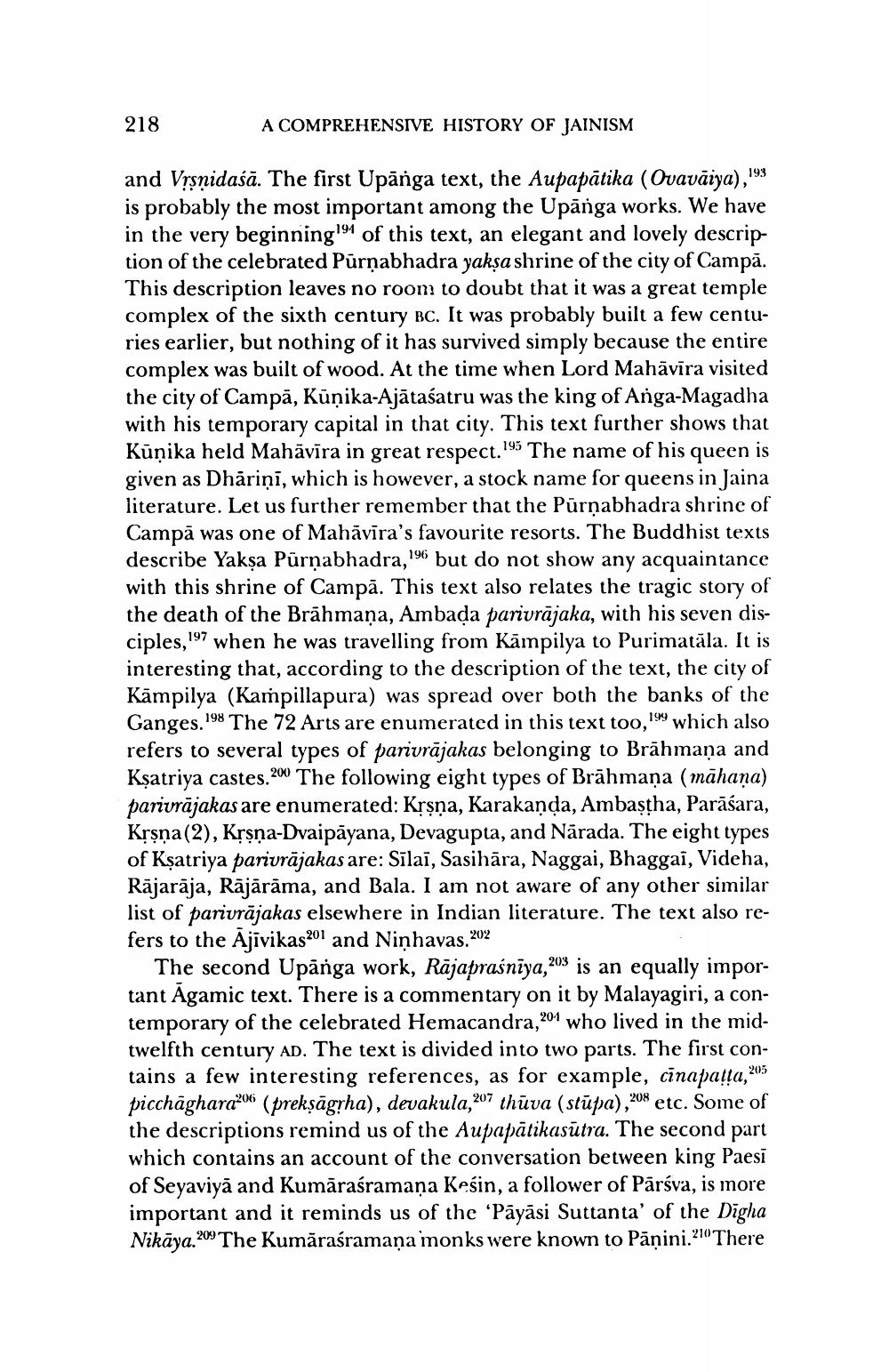________________
218
A COMPREHENSIVE HISTORY OF JAINISM
193
and Vṛṣṇidasă. The first Upanga text, the Aupapātika (Ovavāiya),' is probably the most important among the Upanga works. We have in the very beginning194 of this text, an elegant and lovely description of the celebrated Pūrṇabhadra yakṣa shrine of the city of Campā. This description leaves no room to doubt that it was a great temple complex of the sixth century BC. It was probably built a few centuries earlier, but nothing of it has survived simply because the entire complex was built of wood. At the time when Lord Mahāvīra visited the city of Campā, Kūņika-Ajātaśatru was the king of Anga-Magadha with his temporary capital in that city. This text further shows that Kūņika held Mahāvīra in great respect. 195 The name of his queen is given as Dhāriņi, which is however, a stock name for queens in Jaina literature. Let us further remember that the Pūrṇabhadra shrine of Campa was one of Mahāvīra's favourite resorts. The Buddhist texts describe Yakṣa Pūrṇabhadra,196 but do not show any acquaintance with this shrine of Campã. This text also relates the tragic story of the death of the Brāhmaṇa, Ambada parivrājaka, with his seven disciples, 197 when he was travelling from Kampilya to Purimatala. It is interesting that, according to the description of the text, the city of Kampilya (Kampillapura) was spread over both the banks of the Ganges. 198 The 72 Arts are enumerated in this text too,199 which also refers to several types of parivrajakas belonging to Brahmana and Kṣatriya castes. 200 The following eight types of Brāhmaṇa (māhaṇa) parivrājakas are enumerated: Kṛṣṇa, Karakanda, Ambaṣṭha, Parāśara, Kṛṣṇa(2), Kṛṣṇa-Dvaipayana, Devagupta, and Nārada. The eight types of Ksatriya parivrājakas are: Silai, Sasihāra, Naggai, Bhaggai, Videha, Rājarāja, Rājārāma, and Bala. I am not aware of any other similar list of parivrăjakas elsewhere in Indian literature. The text also refers to the Ajivikas 201 and Niņhavas.202
205
The second Upanga work, Rājapraśniya,203 is an equally important Agamic text. There is a commentary on it by Malayagiri, a contemporary of the celebrated Hemacandra,204 who lived in the midtwelfth century AD. The text is divided into two parts. The first contains a few interesting references, as for example, cinapaṭṭa, picchaghara (prekṣāgṛha), devakula,207 thūva (stūpa),208 etc. Some of the descriptions remind us of the Aupapātikasutra. The second part which contains an account of the conversation between king Paesi of Seyaviya and Kumāraśramaṇa Kesin, a follower of Parśva, is more important and it reminds us of the 'Payasi Suttanta' of the Digha Nikaya.209 The Kumāraśramaṇa monks were known to Panini.210There




